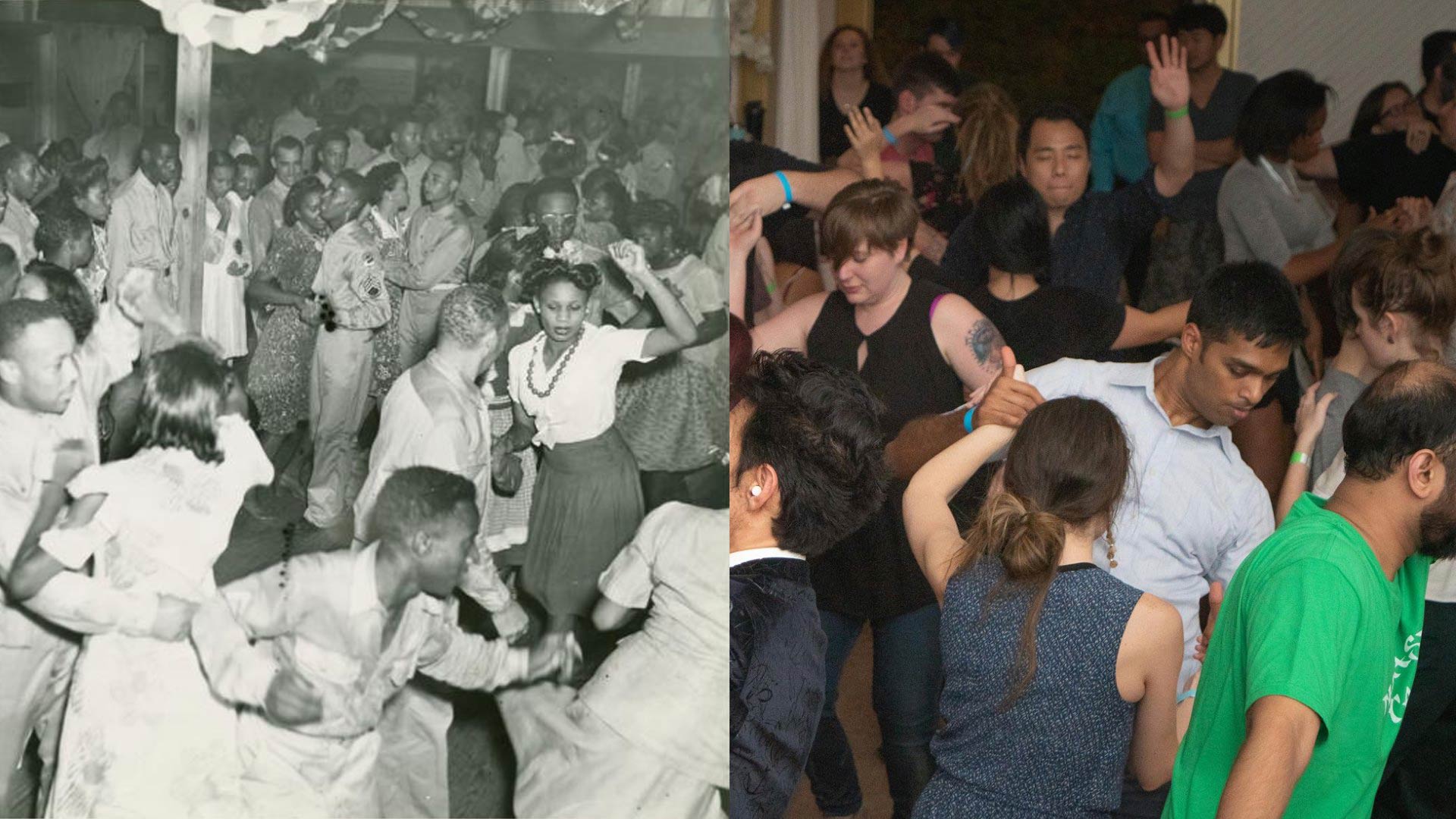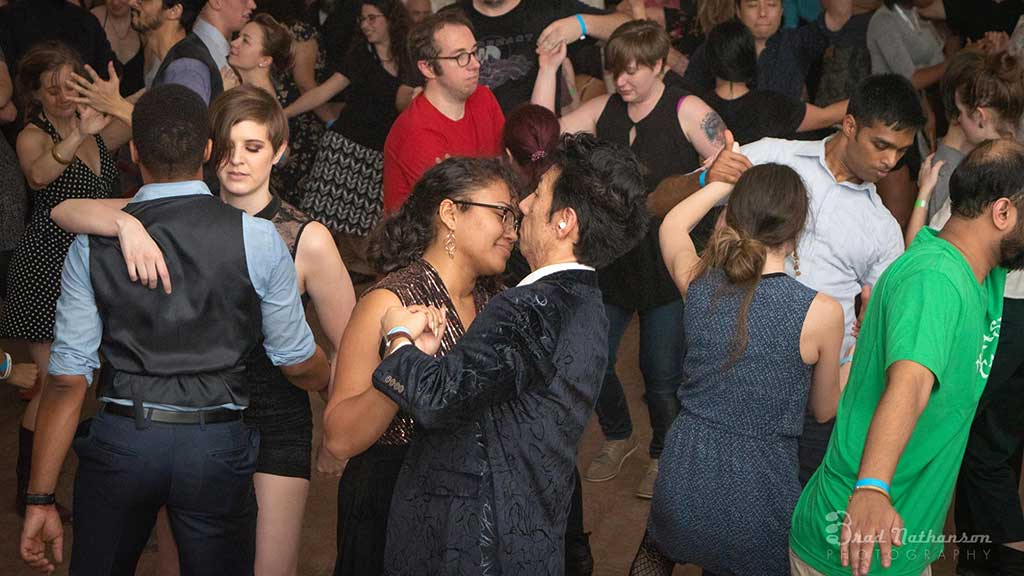
Blues Dancing and Its African American Roots
- Duration:Temporary
- Location:Laubin Gallery of American Indian Cultures
(date) 3/6/2020–5/31/2022
“Blues dance” is a new name encompassing a family of social and popular dance practices of everyday people within African American communities in the US. It was and is done to blues music from gospel, to jazz, acoustic Delta blues, electric Chicago Blues and more. Like other branches of African American vernacular dance such as Chicago Steppin’, Hip Hop, and Lindy Hop, the roots of Blues dance evolved out of African and African American dance traditions. Since the 1990s blues dance has become popular in mainstream communities around the world.
Come explore Blues Dance and African American vernacular dance as it evolved and is practiced today in our local community. Included in the exhibit are artworks by contemporary artists, archival photographs, and video interviews with local African American community members and University alumni sharing personal stories of dance and music.

Additional Resources
Exhibit Text
We are making the full text of the exhibit available here, in large print PDF (1.8 MB).
Download Large-Print Exhibit Text (PDF)Audio Playlists
Listen to an exhibit-inspired playlist:
Characteristics of Blues Dance
Jennifer White is a committee member who has helped to create and develop the Blues Dance and its African American Roots exhibit. She has created the following videos demonstrating a few different choreographic elements that are commonly seen in Blues.
-
Groundedness
-
Pulse
-
Lag
















